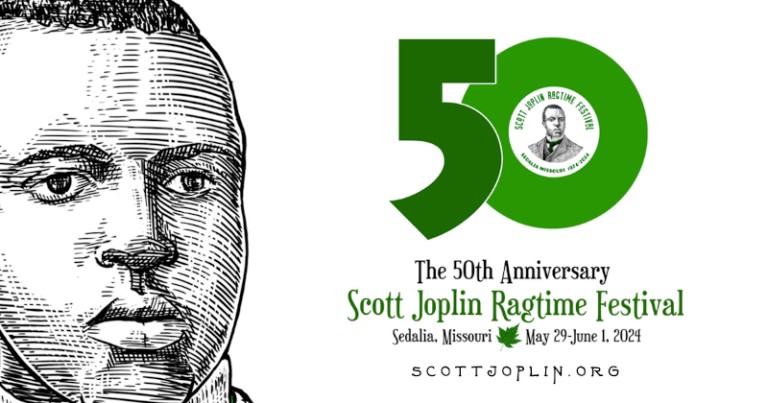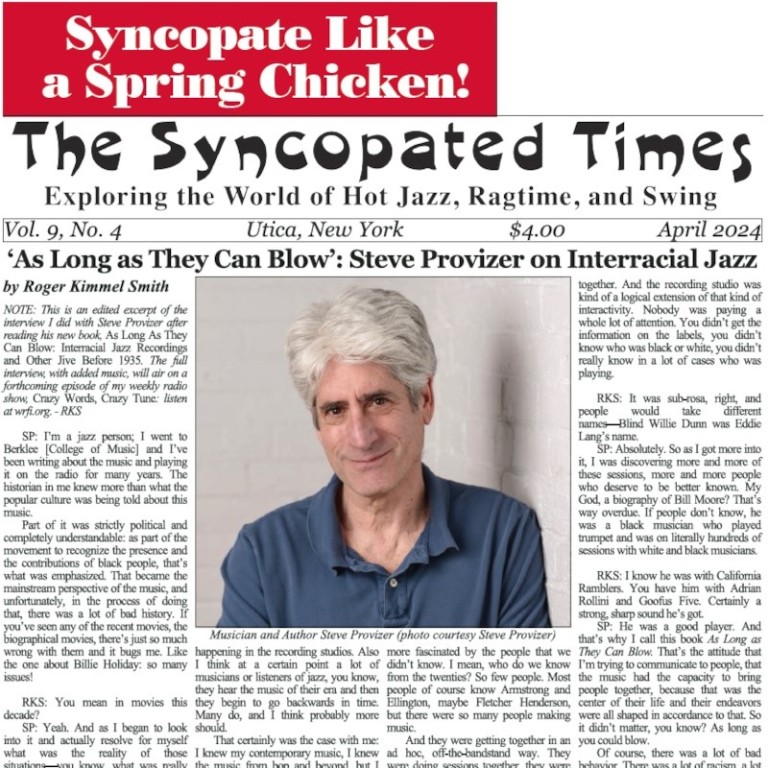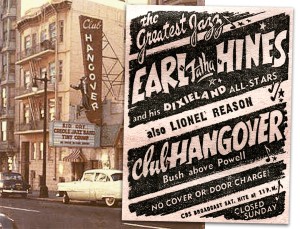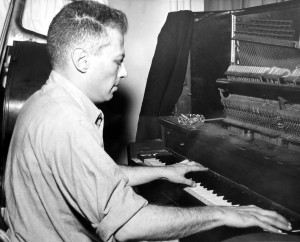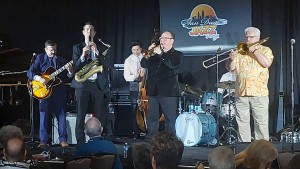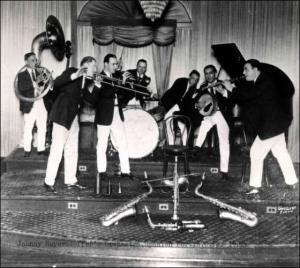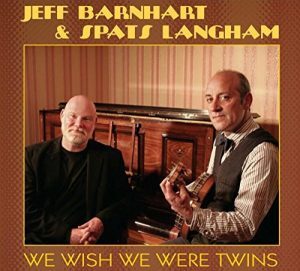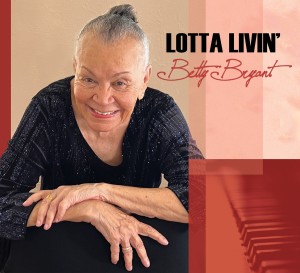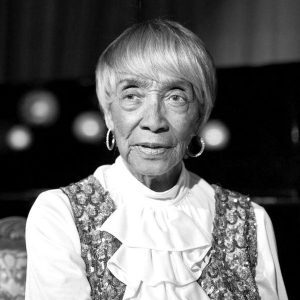 Pioneering Lindy Hopper and jazz dancer Norma Miller, known as “the Queen of Swing” to modern Lindy Hoppers, passed away May 5, 2019 from degenerative heart disease. She died surrounded by loved ones, watching longtime friends doing the dance she helped create, and listening to jazz. She was 99 years old.
Pioneering Lindy Hopper and jazz dancer Norma Miller, known as “the Queen of Swing” to modern Lindy Hoppers, passed away May 5, 2019 from degenerative heart disease. She died surrounded by loved ones, watching longtime friends doing the dance she helped create, and listening to jazz. She was 99 years old.
Born December 2, 1919, to a widowed mother who had immigrated only a few years earlier from Barbados, Norma Miller grew up in the Harlem neighborhood of New York City. She, knew she wanted to be a dancer and performer as soon as she was introduced to Charleston steps by the dancers at her mother’s rent parties. After that, she seemed to breathe dance. She attended formal dance classes and danced on the street corners, first because she enjoyed it, and soon after for the coins passers-by would toss her way to spend on candy and motion pictures. She learned the Shim Sham and other chorus girl steps from a friend whose mother was a chorus girl at the Apollo Theater.
Ms. Miller had always been passionate about music, but fate gave her two incredible educational experiences. For a while she lived with her mother and sister in an apartment across from the Cotton Club, where she heard the music of Duke Ellington every night pouring from the open windows. She could see some of the stage shows, and dreamed of one day being a performer. The family then moved to an apartment behind the Savoy Ballroom, where the siblings would often sit on their fire escape trying to make sense of the dancing shadows in the windows, and listening to the house band, Chick Webb’s Orchestra, and many other great bands of the early swing era.
Determined to be a dancer, a teenage Ms. Miller was even hired as a chorus girl—and was soon fired when the truancy officer came to take her back to school. But the opportunity that launched her into history came when she took a Lindy Hop prize out of the hands of some of Harlem’s best Swing dancers, bringing her to the attention of Herbert “Whitey” White, a floor manager at the famous Savoy Ballroom who had formed a soon-to-be-famous group of performance Lindy Hoppers.
Whitey took Ms. Miller into the group, and quickly learned he could depend on the young woman’s professionalism and grit. Ms. Miller’s talent as a fierce and fun dancer made her a star at four of New York’s “Harvest Moon Ball” contests, the most famous dance competition of its day. She also danced in two of Lindy Hop’s most famous film performances: the Marx Brothers’ A Day at the Races, and Olsen and Johnson’s Hellzapoppin’, widely considered the greatest showcase of Lindy Hop in history. With her success as a member of Whitey’s Lindy Hoppers, a teenage Miller was able to tour the world, meet royalty, and earn steady pay during the Great Depression, when many American people of color were having a difficult time finding work, let alone the ability to travel.
With the onset of World War II and a growing feeling of being exploited by their manager, veteran Lindy Hoppers including Ms. Miller left Whitey’s Lindy Hoppers. She began studying other dance forms such as Katherine Dunham’s and Martha Graham’s revolutionary dances, and producing shows for clubs like Small’s Paradise in New York and Club Alabam in Los Angeles. She even began a career as a Broadway dancer, only to surprisingly find she had been making much more money as a Lindy Hopper and club producer.
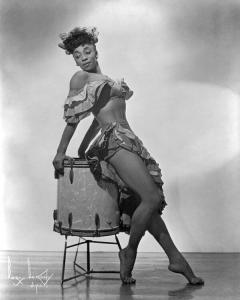 Already a pioneer in jazz dance, Miller would become one of the few Black female entrepreneurs and managers in show business. Starting in the late 40s, she began creating performance groups: first, the Norma Miller Dancers, and then Norma Miller and her Jazzmen, with which she would tour for decades. After a few stalled romances, Ms. Miller came to feel that a husband and children were not compatible with her lifestyle and goals, so she made her art her life’s work.
Already a pioneer in jazz dance, Miller would become one of the few Black female entrepreneurs and managers in show business. Starting in the late 40s, she began creating performance groups: first, the Norma Miller Dancers, and then Norma Miller and her Jazzmen, with which she would tour for decades. After a few stalled romances, Ms. Miller came to feel that a husband and children were not compatible with her lifestyle and goals, so she made her art her life’s work.
In the 1970s, Ms. Miller began a side career in stand-up comedy under the mentorship of Redd Foxx, once again breaking ground as one of the few Black women at the time in the profession. By her own account, in her earlier years she had not thought much of the racial injustices in American society, even though her mother had picketed and protested in 1930s Harlem. But adulthood brought about a more socially-conscious Norma Miller. Race relations became a strong theme of Norma’s comedy, and would later be a strong theme when she discussed the dance and music that was pioneered by African-Americans and then adopted, and in many cases appropriated, by mainstream America.
Ms. Miller’s career changed again in the early 1980s as groups of dancers from different parts of America, England, and Sweden became fascinated with Whitey’s Lindy Hoppers film footage, and wanted to learn the dance and meet its originators. Original Whitey’s Lindy Hoppers including Norma Miller, Frankie Manning, and Al Minns were sought out to teach the dance in America and abroad, marking a resurgence in the popularity of Lindy Hop and swing music.
Once again Ms. Miller toured the world—this time as a speaker and teacher. In 1996, she published her autobiography, Swingin’ at the Savoy (co-written with Evette Jensen). A children’s book based on her life, Stompin’ at the Savoy by Alan Govenar and Martin French, soon followed, as did a documentary, Queen of Swing. Ms. Miller also had multiple appearances in Ken Burns’ Jazz.
In the modern Lindy Hop scene, Ms. Miller became known for her strong voice, her lively sense of humor, and her unflinching discussions of race and sexism in society and in show business throughout the 20th century. In particular, she always sought to connect with and empower the women of color in the modern Lindy Hop and jazz scene.
In her final years, Ms. Miller toured Europe with an Italian big band and cut several tracks for an album, proving that she still lived by her motto, “Never stop swinging.” In the fashion of great jazz mythology, she passed away as the opening piano tide of Count Basie’s “Jumpin’ at the Woodside” came over the speakers.
With her passing, all known members of the original Whitey’s Lindy Hoppers have died, marking the end of an era in swing dance history. Ms. Miller’s impact, however, endures. Her dancing and speaking have reached thousands of people over the last century, both in person and through popular media. Her autobiography, documentary, and the many in-depth interviews she gave will serve as a well of knowledge for future dancing generations. And the 100th anniversary of her life will be celebrated at the International Lindy Hop Championships this year, which takes place over her birthday weekend, when hundreds of Lindy Hoppers will come together and dance in her memory.
Though the “Queen of Swing” is dead, her legacy will live on. Long live the queen.

